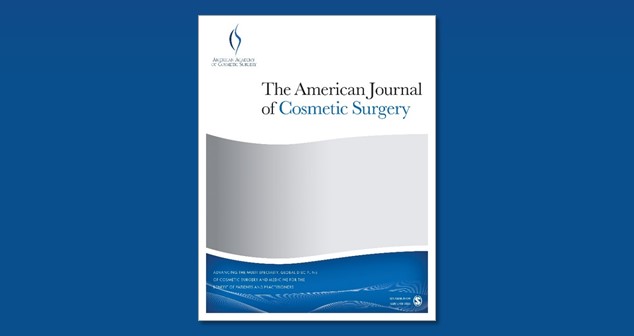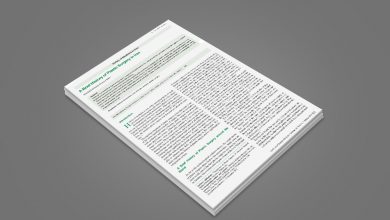Cosmetic Surgery in Iran: Sociodemographic Characteristics of Cosmetic Surgery Patients in a Large Clinical Sample in Tehran

Abstract
Sociodemographic characteristics of cosmetic surgery patients are less studied in developing countries. Examining sociodemographic characteristics of cosmetic surgery patients in clinical settings can help surgeons identify their potential patients and highlights marketing opportunities for medical institutions. We conducted this study to determine the sociodemographic details of a large clinical sample from Tehran, Iran. The aim of this study was to present the demographic characteristics of Iranian patients undergoing cosmetic procedures. Tehran was selected from Iran as its most populated city and center of most medical facilities. The present study aimed to examine the sociodemographic characteristics of a large clinical sample (N = 744 patients; 900 cosmetic procedures) who underwent cosmetic surgery in Tehran, Iran. These surgeries were performed by 3 well-known plastic surgeons in Tehran. Sociodemographic details were gathered using patient’s cases and phone interview. A previously published questionnaire with modification was used. Findings suggest that most of the patients (90.7%) are women. Rhinoplasty (61.3%), facial fat injection (6.7%), blepharoplasty (6.3%), facelift (4.0%), and breast augmentation (3.8%) were the top 5 cosmetic procedures in the present sample. Approximately half of the sample (49.6%) was single, and most of married patients (80%) had children. A large number of patients (37.2%) were between 30 and 39 years old. In addition, a considerable proportion of the sample reported university education and being currently employed. This is the first study to document sociodemographic details in a large clinical sample from Iran as an understudied setting. We used insights from evolutionary psychology to explain the large sex differences in the number of cosmetic surgeries. In addition, we compared the findings with existing evidence from the United States and Saudi Arabia. Limitations and future directions are also discussed.
Keywords cosmetic surgery, sex differences, sociodemographic characteristics, Tehran
Abdoljalil Kalantar Hormozi, MD, Simin Maleki, MD  , Abolfazl Rahimi, MD, Ali Manafi, MD, Seyed Javad Amirizad, MD
, Abolfazl Rahimi, MD, Ali Manafi, MD, Seyed Javad Amirizad, MD
First Published April 16, 2018 in The American Journal of Cosmetic Surgery | Link | Research Article | https://doi.org/10.1177/0748806818764734
Introduction
Cosmetic Surgery in Iran: Sociodemographic Characteristics of Cosmetic Surgery Patients in a Large Clinical Sample in Tehran. Cosmetic surgery has existed in many cultures for at least thousands of years in different forms.1 For example, historical evidence demonstrated that reconstruction of body defects in its primitive forms was performed more than 5000 years ago in ancient Persia.2 Recent excavations in southern Iran showed that the settlers of the Persian Plateau managed to insert artificial eye prosthesis with fixation to the face.2 Surgical techniques to reshape or reconstruct nasal deformities were practiced by ancient Greeks, Europeans, and Indians long before the advances in modern medical procedures.1 Advent of anesthesia facilitated practicing cosmetic surgery in medical settings. During World War I, many maxillofacial wounds were treated, leading to improvements and developments in the field of reconstructive surgery. After World War I, attention was gradually shifted toward aesthetic surgeries.
The persistence of cosmetic surgery and body modification across world regions and historical periods stimulated sociologists and psychologists to study the psychosocial correlates of cosmetic surgery in different cultures. Recent findings consistently indicate that applying for cosmetic surgery is largely based on subjective psychological self-appraisal rather than objective aesthetic assessments.3 That is, many individuals who apply for a cosmetic surgery have normal physical appearance. Generally, people who seek cosmetic surgery do not differ in overall body satisfaction as compared with people who are not interested in undergoing cosmetic surgery. Instead, cosmetic surgery applicants are typically dissatisfied with specific parts of their body that need surgical correction in their viewpoints. 4 There are other factors associated with increasing interest in cosmetic surgery. Specifically, higher household income, higher weight, older age, having children, lower educational status, greater acceptance of media images of attractiveness, lower self-perceived attractiveness, lower comparative body and appearance satisfaction, and history of being teased about one’s appearance may increase the interest in cosmetic surgery.1,5–7 Moreover, normative personality traits (eg, agreeableness) and dark personalities (eg, Machiavellianism) can also influence the acceptance of cosmetic surgery.8,9 It was found that 3 disciplines are needed to explore cosmetic surgery: psychology, sociology, and history.10 Psycho-logical and historical points of cosmetic surgeries are well studied. The current study aimed to examine sociodemographic characteristics of a large clinical sample from Tehran, Iran. The title of the article is Cosmetic Surgery in Iran: Sociodemographic Characteristics of Cosmetic Surgery Patients in a Large Clinical Sample in Tehran.
Methods
Participants
A total of 744 patients were recruited from surgical clinics in Tehran, Iran. Overall, 900 cosmetic surgeries were performed on these 744 patients as some patients had multiple procedures in one session. All surgeries were performed by 3 plastic surgeons in Tehran. All patients were selected using consecutive sampling. Patients underwent a plastic surgery by one of the plastic surgeons. Inclusion criteria included informed consent 1 and undergoing a cosmetic plastic surgery.
2 Exclusion criteria included a high percentage of missing values, 1 surgeries that were performed with both aesthetic and reconstructive intentions, 2 and non–cosmetic surgical procedures due to blepharoptosis.3
Measures
A previously published questionnaire11 with modification was used (see the appendix). This included information on the type of surgery requested, history of cosmetic surgery, sex, age, marital status, age of spouse, number of children, educational status, and employment status.
Procedure
Questionnaires were completed postoperatively. Basic information (history of cosmetic surgery, sex, and age) was obtained from patient’s surgery case and further information needed to complete the questionnaire debriefed during a phone interview. All participants were informed about the nature of the study during the phone interview and some asked to exclude part of their information which is presented as missing information.
This study was reviewed and approved by the university’s institutional review board.
Results
Among the performed surgeries (N = 900), the most frequent surgeries were rhinoplasty (61.3%), facial fat injection (6.7%), blepharoplasty (6.3%), face lift (4.0%), breast augmentation (3.8%), breast reduction (3.3%), eyebrow lift (2.7%), and liposuction (2.3%). All surgeries and their frequencies are presented in Figure 1. This paper entitled Cosmetic Surgery in Iran: Sociodemographic Characteristics of Cosmetic Surgery Patients in a Large Clinical Sample in Tehran.

Figure 1. The frequency of each cosmetic procedure.
In the study sample, 128 patients (17.2%) had a history of aesthetic plastic surgery. Moreover, 675 patients (90.7%) were women with the remainder (9.3%) being men. The mean ages of men and women were 32.8 and 32.6, respectively. The age distribution of the sample is presented in Figure 2.
In the present sample, 369 patients (49.6%) were single, 288 patients (38.7%) were married, 6 patients (0.8%) were divorced, 10 patients (1.3%) were widowed, and 71 patients (9.5%) preferred not to disclose their marital status. Among those who were married, 172 patients (80.0%) had children. Among married patients, 149 patients (84.7%) were younger than their husbands and 18 patients (10.2%) were the same age.

Figure 2. The age distribution of the sample.
The educational status of the patients is presented in Figure 3. Moreover, occupational status of the patients is summarized in Figure 4. As shown in Figure 3, 3.2% had some high school education, 12.1% had a high school diploma, 34.9% had a bachelor’s degree, 11.3% had a master’s degree, and 8.7% held a doctorate degree. Of note, 29.7% of the sample’s educational background was unavailable. Regarding the employment status of the participants, 19.8% were unemployed, 23.3% were university students (undergraduate and graduate), 38.2% reported being employed, 1.5% were retired, and 17.3% of the sample’s employment status was unavailable.

Figure 3. Educational background of the sample.

Figure 4. Employment status of the sample.
Discussion
The paper is about Cosmetic Surgery in Iran: Sociodemographic Characteristics of Cosmetic Surgery Patients in a Large Clinical Sample in Tehran. The present study aimed to examine sociodemographic characteristics of cosmetic surgery patients in a large clinical sample from Tehran, Iran. Generally, Iran is known for having high rates of cosmetic surgery, especially rhinoplasty.12 This study is the first to document sociodemographic characteristics of a large sample of cosmetic surgery applicants in Iranian context. Investigation of sociodemographic correlates of elective cosmetic surgery is important for both clinicians and researchers for at least 3 reasons. First, providing sociodemographic details of cosmetic surgery patients may facilitate cross-cultural comparisons between different cultural contexts. Second, cosmetic surgeons and aesthetic medical clinics can expand their market to socioeconomic classes and communities that are currently not interested in undergoing cosmetic surgery. Third, potential psychosocial risk factors associated with cosmetic surgery can be examined in large samples. As a result, it is crucial for researchers and surgeons to have detailed information on sociodemographic characteristics of patients who underwent cosmetic surgery, particularly in nations with increasing rates of cosmetic surgery.
The findings of the present study revealed that rhinoplasty, facial fat injection, blepharoplasty, face lift, and breast augmentation are the most frequently performed surgeries. This is consistent with the notion that Iran has very high rates of rhinoplasty compared with other countries. Yet, existing evidence suggests that, in the United States in 2013, liposuction, breast augmentation, blepharoplasty, abdominoplasty, and rhinoplasty were the top 5 surgeries.13 In 2014, breast augmentation, rhinoplasty, liposuction, blepharoplasty, and facelift were the top 5 surgical procedures in the United States.14 A demographic study in Saudi Arabia revealed that top 5 surgical procedures were breast augmentation, liposuction, nose reshaping, eyelid surgery, and tummy tuck.15 The difference in top 5 surgeries may be attributable to the fact that abdominoplasty and liposuction are starting to gain momentum in Iran; however, they have been popular in the United States for some time, and they are listed in top 5 surgeries in Saudi Arabia. In addition, maybe the plastic surgeons whose patients participated were mostly known for their facial plastic surgeries rather than abdominoplasty, breast augmentation/reduction, or liposuction. Considering the fact that no comprehensive dataset is available regarding the cosmetic surgical procedures in Iran, the present findings may be among the first empirical reports to document sociodemographic characteristics of cosmetic surgery patients in Iran.
As can be seen in Figure 2, a considerable number of patients (37.2%) were between 20 and 29 years old. Existing evidence suggests that a considerable number of American patients (39.3%) age between 35 and 50 years.13 Data from Saudi Arabia study revealed that in Saudi culture, 20 to 40 years of age was the most common age at which individuals use cosmetic alterations.15 A cultural difference may explain this age difference. In contemporary Iran, cosmetic surgery is popularized among the youth and media images of beauty perpetuate the practice of cosmetic surgery even among adolescents. Many young Iranian women apply for cosmetic surgery as it has become a normal and, in some instances, a matter of conspicuous consumption. Trends in Saudi Arabia study indicate that younger Saudis are also motivated to undergo cosmetic surgery procedures. However, it seems that young American women are less interested in surgically enhancing their appearance. There is a large sex difference in undergoing cosmetic surgery. In the present sample, 90.7% of the patients were women. This female-to-male ratio of 9 to 1 is somewhat consistent across cultures.1 For example, the vast majority of cosmetic surgeries and procedures in the United States and Saudi Arabia were performed on women.14, 15 Evolutionary psychology may present a rationale for the large sex difference in cosmetic surgery. Women’s and men’s indicators of attractiveness (especially in mating contexts) differ significantly,16–18 and cosmetic surgery is more successfully capable of modifying women’s attractiveness indicators. That is, women’s attractiveness cues (eg, waist-to-hip ratio, facial symmetry, and smooth skin) can easily be manipulated by cosmetic surgery19; however, men’s attractiveness is defined by traits not easily modified by cosmetic surgery (eg, muscularity, social status, and athletic ability). With advancement of surgical procedures, men might also become more interested in obtaining cosmetic surgeries that enhance their attractiveness indicators. For example, the American Society for Aesthetic Plastic Surgery reports that the number of cosmetic procedures performed among men has increased over 325% since 1997, with ab sculpting procedures, also known as “six-pack surgery,” among the most popular. 14 Findings of the present study indicate that most of the patients were employed (38.2%). It is important to note that surgeon fees per procedure are variable in Iran, with some surgeons having higher fees and some having lower government-approved fees. Therefore, not every patient can afford high fees of cosmetic surgery, and having a well-paid job may facilitate gaining a more expensive procedure. Furthermore, around 55% of the sample had some university-level degree, indicating that a large proportion of the cosmetic surgery patients were well educated.
In sum, the present study provided new information on age, sex differences, educational background, employment status, marital status, history of cosmetic surgery, familial characteristics, and top cosmetic surgeries in a large clinical sample from Iran. Limitations of the present research are worth noting. First, all data were gathered from Tehran, Iran. It is recommended for future research to document sociodemographic characteristics of cosmetic surgery patients in other cities and subcultures of Iran. Second, patients of only 3 surgeons participated in this study. Future research can use a larger number of surgeons using probability sampling techniques. Third, we did not assess psychological profile of the patients (eg, body dysmorphic disorder [BDD] symptoms, body image, and patient satisfaction). It is strongly recommended for future research to evaluate the psychological characteristics of the patients and their interaction with sociodemographic characteristics of the patients.
Appendix
Questionnaire

Declaration of Conflicting Interests
The author(s) declared no potential conflicts of interest with respect to the research, authorship, and/or publication of this article.
Funding
The author(s) received no financial support for the research, authorship, and/or publication of this article.
ORCID iD
Simin Maleki  https://orcid.org/0000-0001-6941-6571
https://orcid.org/0000-0001-6941-6571
References
1. Frederick, D, Yoshiura, R, Scott, T. Cosmetic surgery in the United States. In: Naples, NA ed. The Wiley Blackwell Encyclopedia of Gender and Sexuality Studies. 2016:1-3.
Google Scholar | Crossref
2. Kalantar-Hormozi, A . A brief history of plastic surgery in Iran. Arch Iran Med. 2013;16:201-206.
Google Scholar | Medline
3. Naraghi, M, Atari, M, Asadollahi, H. When aesthetics, surgery, and psychology meet: aesthetic nasal proportions in patients having rhinoplasty and normal adults. Surg J(N Y). 2016;2:e44-e48.
Google Scholar | Crossref | ISI
4. Frederick, DA, Lever, J, Peplau, LA. Interest in cosmetic surgery and body image: views of men and women across the lifespan. Plast Reconstr Surg. 2007;120:1407-1415.
Google Scholar | Crossref | Medline | ISI
5. Kalantar-Hormozi, A, Jamali, R, Atari, M. Interest in cosmetic surgery among Iranian women: the role of self-esteem, narcissism, and self-perceived attractiveness. Eur J Plast Surg. 2016;39:359-364.
Google Scholar | Crossref | ISI
6. Atari, M, Jamali, R, Bahrami-Ehsan, H. Development and validation of Adolescent Comparative Body and Appearance Satisfaction Scale (ACBASS). Curr Psychol. 2016;36:1-2.
Google Scholar
7. Javo, IM, Sørlie, T. Psychosocial predictors of an interest in cosmetic surgery among young Norwegian women: a population-based study. Plast Reconstr Surg. 2009;124:2142-2148.
Google Scholar | Crossref | Medline
8. Swami, V, Chamorro-Premuzic, T, Bridges, S, Furnham, A. Acceptance of cosmetic surgery: personality and individual difference predictors. Body Image. 2009;6:7-13.
Google Scholar | Crossref | Medline | ISI
9. Chegeni, R, Atari, M. The Dark Triad of personality and considering cosmetic surgery: an exploratory study. J App Biobehav Res. 2017;22:e12071.
Google Scholar | Crossref
10. Salehahmadi, Z, Rafie, SR. Factors affecting patients undergoing cosmetic surgery in Bushehr, southern Iran. World J Plast Surg. 2012;1(2):99-106.
Google Scholar | Medline
11. Schlessinger, J, Schlessinger, D, Schlessinger, B. Prospective demographic study of cosmetic surgery patients. J Clin Aesthet Dermatol. 2010;3(11):30-35.
Google Scholar | Medline
12. Sari, AA, Babashahy, S, Olyaeimanesh, A. Estimating the frequency and rate of first 50 common types of invasive procedures in Iran healthcare system. Iran J Public Health. 2012;41:60-64.
Google Scholar
13. The American Society for Aesthetic Plastic Surgery . Cosmetic Surgery National Data Bank Statistics. http://www.surgery.org. Published 2013. Accessed September 20, 2016.
Google Scholar
14. American Society of Plastic Surgeons. Plastic surgery procedures . http://www.plasticsurgery. Published 2014. Accessed March 13, 2015.
Google Scholar
15. Alharethy, SE . Trends and demographic characteristics of Saudi cosmetic surgery patients. Saudi Med J. 2017;38(7):738-741.
Google Scholar | Crossref | Medline
16. Hume, DK, Montgomerie, R. Facial attractiveness signals different aspects of “quality” in women and men. Evol Hum Behav. 2001;22:93-112.
Google Scholar | Crossref | Medline | ISI
17. Buss, DM . Sex differences in human mate preferences: evolutionary hypotheses tested in 37 cultures. Behav Brain Sci. 1989;12:1-14.
Google Scholar | Crossref | ISI
18. Gangestad, SW . Sexual selection and physical attractiveness: implications for mating dynamics. Hum Nature. 1993;4:205-235.
Google Scholar | Crossref
19. Shackelford, TK, Larsen, RJ. Facial attractiveness and physical health. Evol Hum Behav. 1999;20:71-76.
Google Scholar | Crossref | ISI
Author Biographies
Abdoljalil Kalantar Hoemozi, professor of Plastic Surgery, head of CMF (Cranio Maxillofacial Surgery) Unit, ShahidBeheshti University of Medical Sciences. Leadership of first Iranian team for cleft & palate surgery in depressed areas. First hand transplant surgery in Iran, Head of team, 27 Feb 2013.
Simin Maleki, general practitioner, graduated from Islamic Azad University of Tehran (Medical Branch). Currently working as part of human resource program (two years’ community service) in Hormozgan University of Medical Science.
Abolfazl Rahimi, assistant professor and head of Ophthalmology Department, Islamic Azad University of Tehran Ophthalmic Plastic & Reconstructive Surgeon.
Ali Manafi, associate professor of Plastic Surgery, Iran University of Medical Sciences. Chief editor of the World Journal of Plastic Surgery.
Seyed Javad Amirizad, board certified plastic surgeon, private practice past general secretary of Iranian Association of Plastic and aesthetic Surgeons.
You can read more about cosmetic surgery in Iran, in the page entitled cosmetic.

